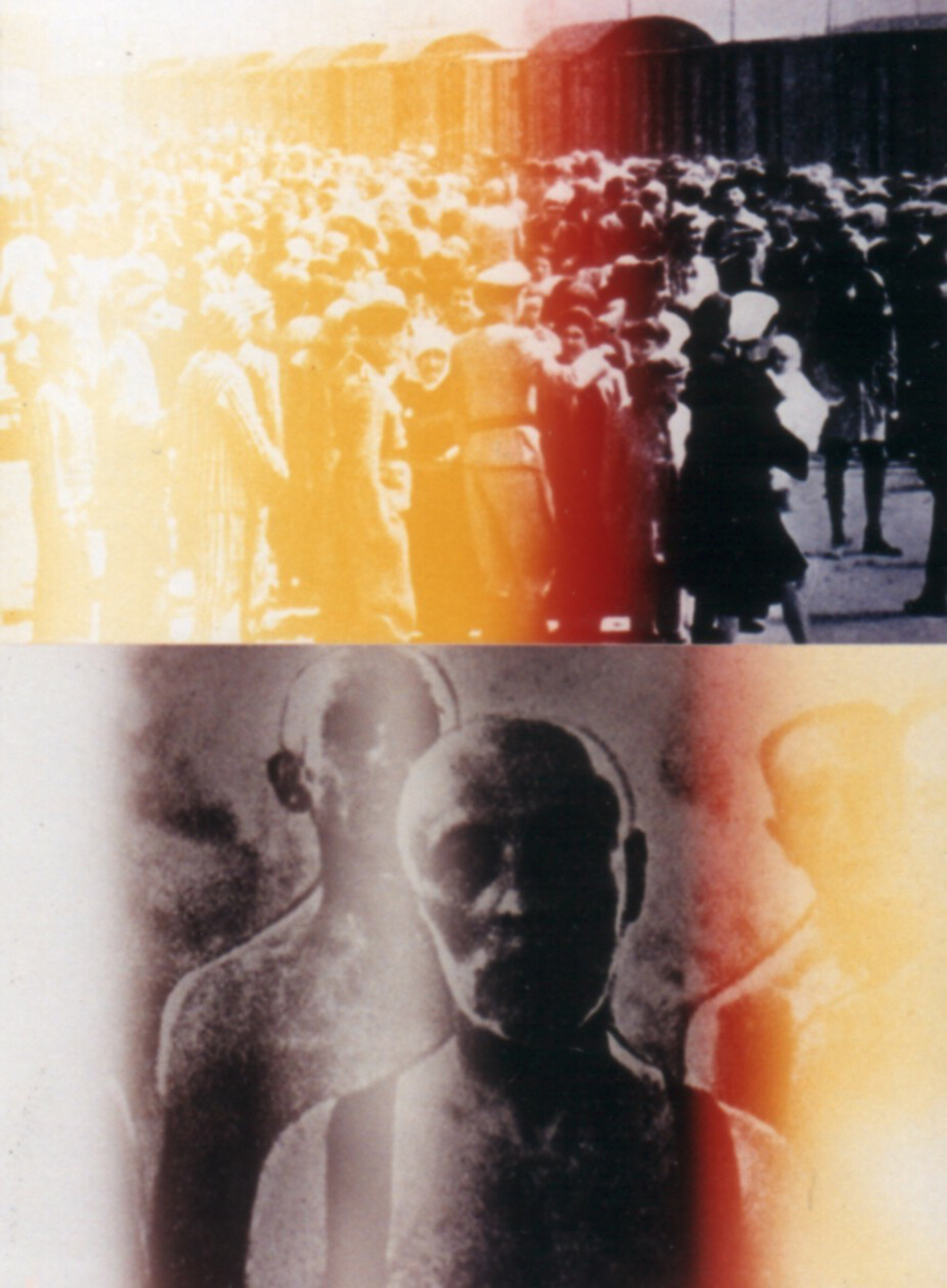Façades (Diptych)
A façade can refer to a physical site or to its camouflage. The word carries a double meaning: it can reveal or hide evidence, sentiments, historical facts.
An archival photograph, sometimes cropped or reframed, is set in counterpoint to a recent color photograph of a place that is not clearly defined by any emblems, but is rather an impressionistic snapshot, a memory trace, of a place or an object somewhere in Europe. The specifity of the archival photograph, recounting an event all but filed into oblivion by time, futility and necessity, is confronted with a seemingly banal landscape. The facile seductive color of the contemporary photographs are given the same weight as their archival counterparts. The starkness and treachery of the archive is set off against the warm innocence of the present. Thus we the spectator must conduct this time-travel by ourselves, making links and analogies between an image from a historical past, and one from the presumed now. In this way the work jars us, questions about specific memories are mediated by our desire to escape into the fluid present.
— Dr. Stephanie Endlich in “Edward Hillel, Fragments: Berlin/Weimar”,Gedenkstatte Deutscher Widerstand Verlag, 1999
“That is why, in both the urban and architectural settings (the Façades,
with their divided, composite, stratified, or superimposed images), and the Faces
that bear witness, memory is always invoked in the present. Such is the strange
power of time, where "the banality of evil” comes to the surface in a flash. It is the
artist’s job to introduce procedures and devices that distance and neutralize the
past, making it present but unlocatable, in the internal, miror-like brilliance of the
images. As with Resnais, the cartography of time is mental, and the architecture
of memory always seeks to make an event come alive in and through the layers
of the past. Between shadow and light, true and false, it issues forth from the
uncertain time of a darkened and blurred image like that of an emaciated corpse,
now raised up and become an “Angel of Stones” (Ange des pierres, Façades no.
23)".
— Christine Buci-Glucksmann, Artpress, December, 1999



Prague National Gallery Installation



Photographs and reflective mylar
mounted on aluminum
1999-2002